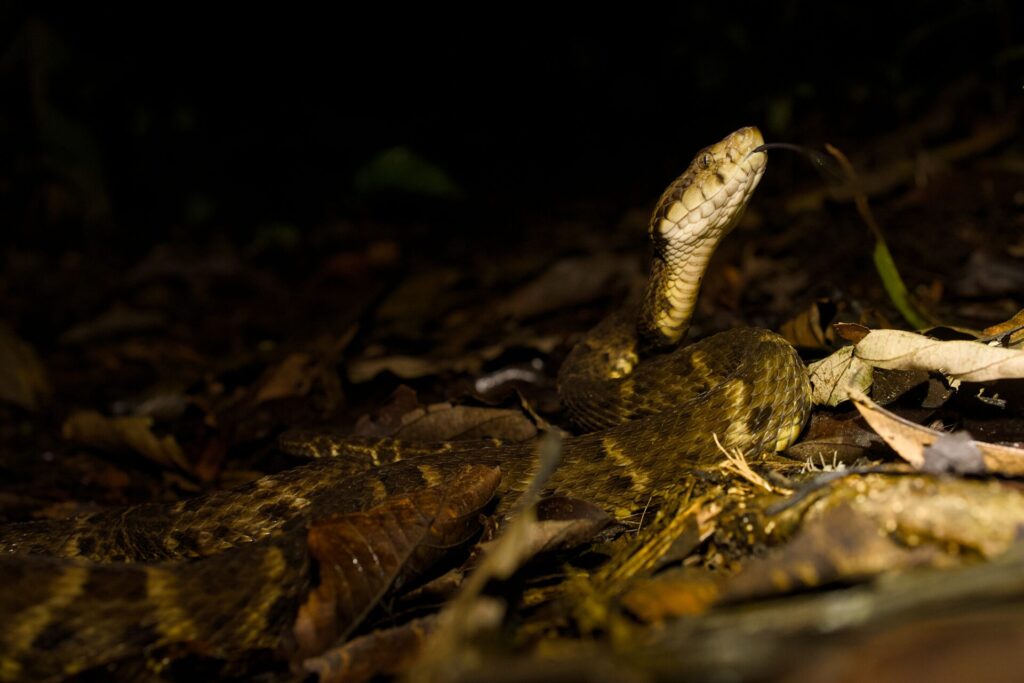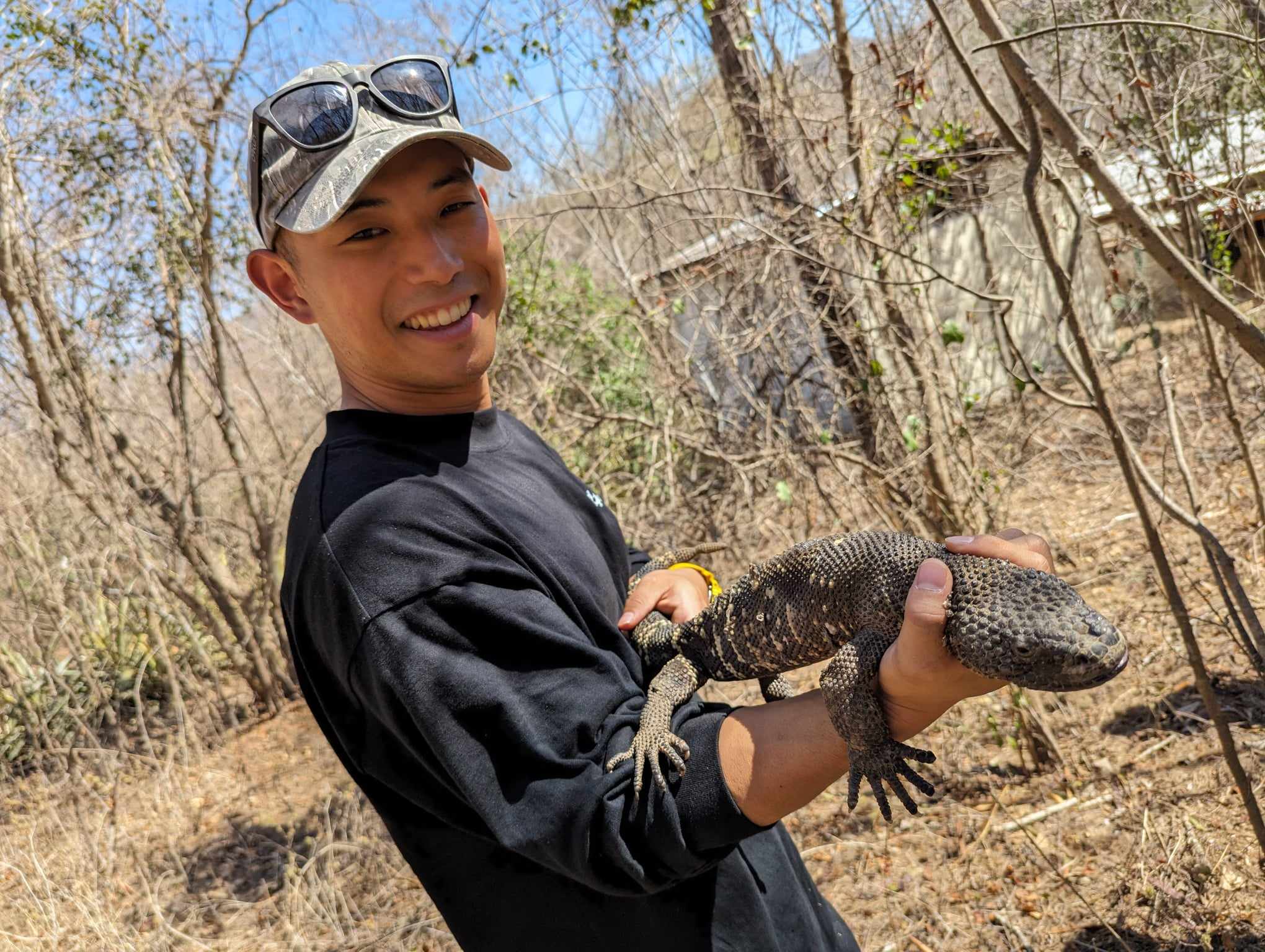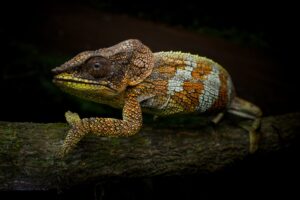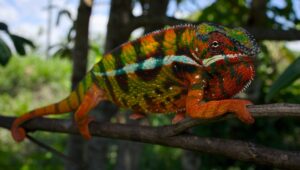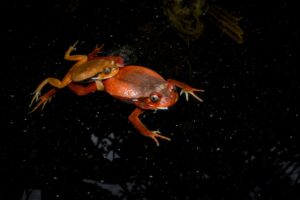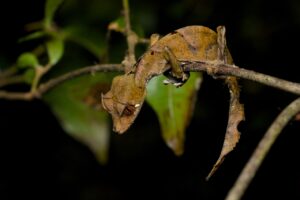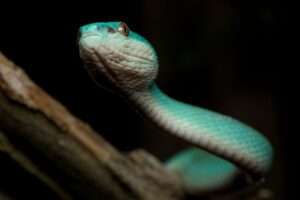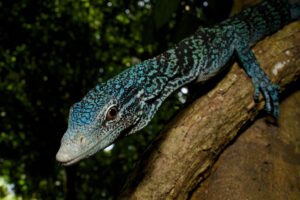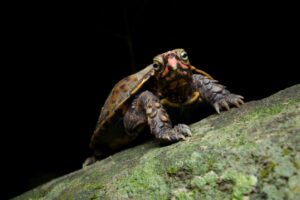Stretching across South America, the Amazon Rainforest is the largest tropical rainforest in the world. It is a treasure trove of biodiversity, home to over 40,000 plant species, more than 3,000 fish species, 427 mammal species, 1,294 bird species, 428 amphibians, 378 reptiles, and an estimated 2.5 million insect species.
Among these incredible creatures, one is especially feared by locals: the Common Lancehead (Bothrops atrox), a venomous pit viper belonging to the viper family.
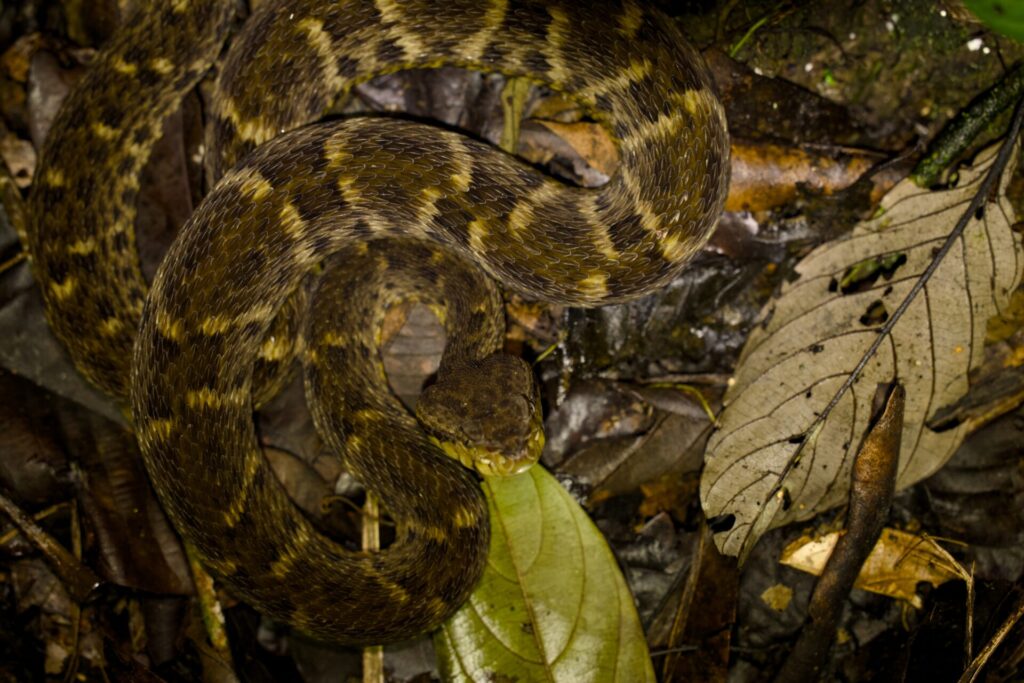
The “Most Dangerous” Snake in the Jungle
The Common Lancehead can be found not only deep in the Amazon jungle, but also near banana and cacao plantations, orchards, and human dwellings. It lives both on the ground and in trees, increasing the likelihood of encounters with humans.
Its aggressive nature and excellent camouflage—its brown coloration blends perfectly with fallen leaves—mean people often step on it without realizing, resulting in a high number of bite incidents. In some years, over 90% of all snakebite incidents in the Amazon are attributed to this species.
Quick Facts About the Common Lancehead
| Item | Information |
|---|---|
| English Name | Common Lancehead |
| Scientific Name | Bothrops atrox |
| Family | Viperidae (Pit Vipers) |
| Distribution | Throughout the Amazon Basin in Central and South America |
| Venom Type | Hemotoxic (causing hemorrhaging and tissue damage) |
| Length | 75–125 cm (some exceed 150 cm) |
| Activity Pattern | Active both day and night |
| Habitat | Forests, farmlands, near homes, plantations, trees and ground |
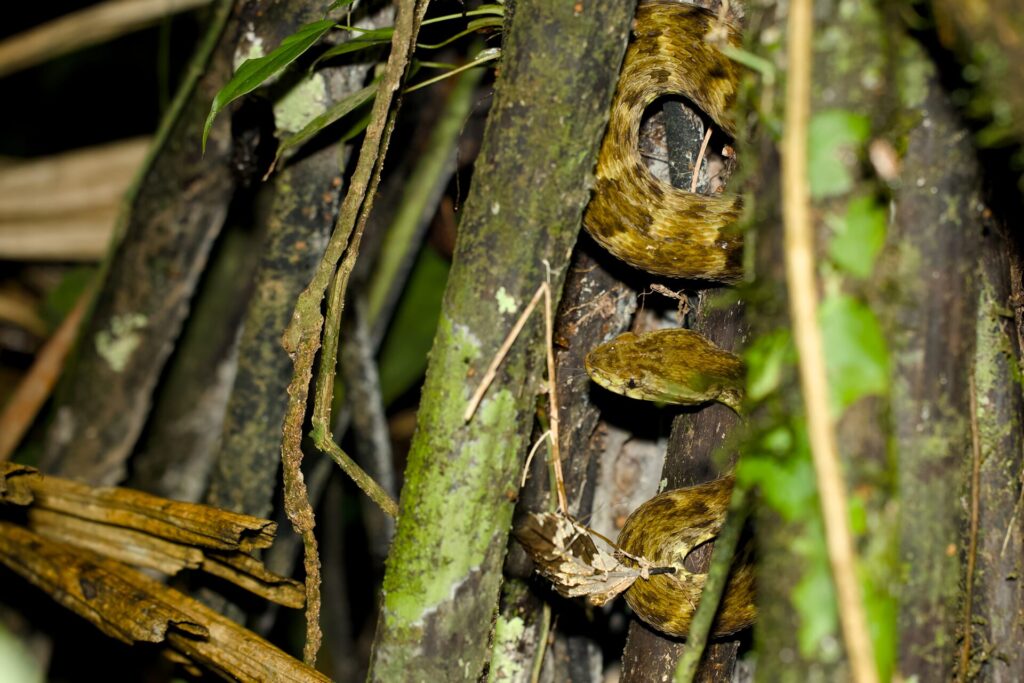
Potent Venom and the Challenge of Medical Access
The venom of the Common Lancehead is extremely potent, often causing uncontrollable bleeding, tissue necrosis, and long-term complications. During my stay in the Amazon, I met a local who still suffers from permanent damage due to a bite.
Medical access is also a serious issue. In the village where I stayed, the nearest hospital required a boat journey of at least 18 hours to reach. Such conditions make the presence of the Lancehead especially feared.

Q&A: Common Questions About the Lancehead
Q1: What should you do if bitten by a Common Lancehead?
→ Seek immediate medical help. Do not attempt to cut the wound or use tourniquets. Antivenom treatment is essential.
Q2: Are there snakes similar to the Lancehead?
→ Yes. Other Bothrops species such as the Fer-de-lance (Bothrops asper) and Jararaca share similar traits and appearances.
Q3: Why are there so many bite incidents?
→ Their camouflage is extremely effective, and they live close to human settlements, making accidental encounters common.
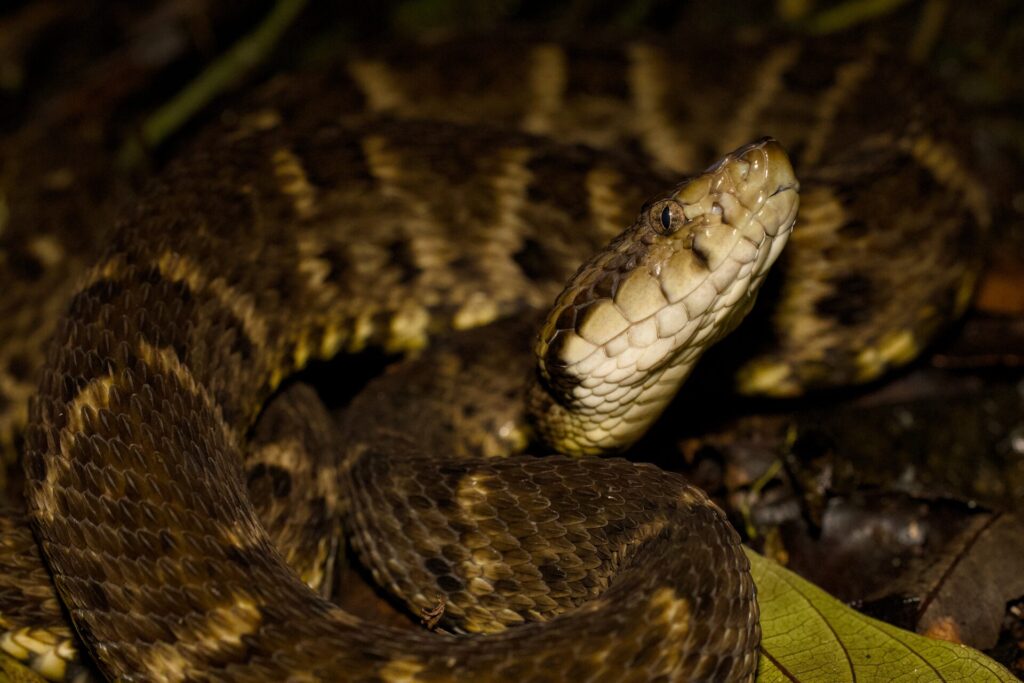
How to Stay Safe When Encountering One
- Make noise while walking to alert snakes of your presence
- Watch your footing carefully
- Use a strong flashlight when walking at night
- Be mindful of low-hanging branches as well as the ground
Day and Night Activity: A Personal Observation
While commonly described as nocturnal, I observed Common Lanceheads active during the day as well. One I saw in the daytime quickly fled into the underbrush before I could take a photo, but at night I was able to witness one lying in wait among the fallen leaves.
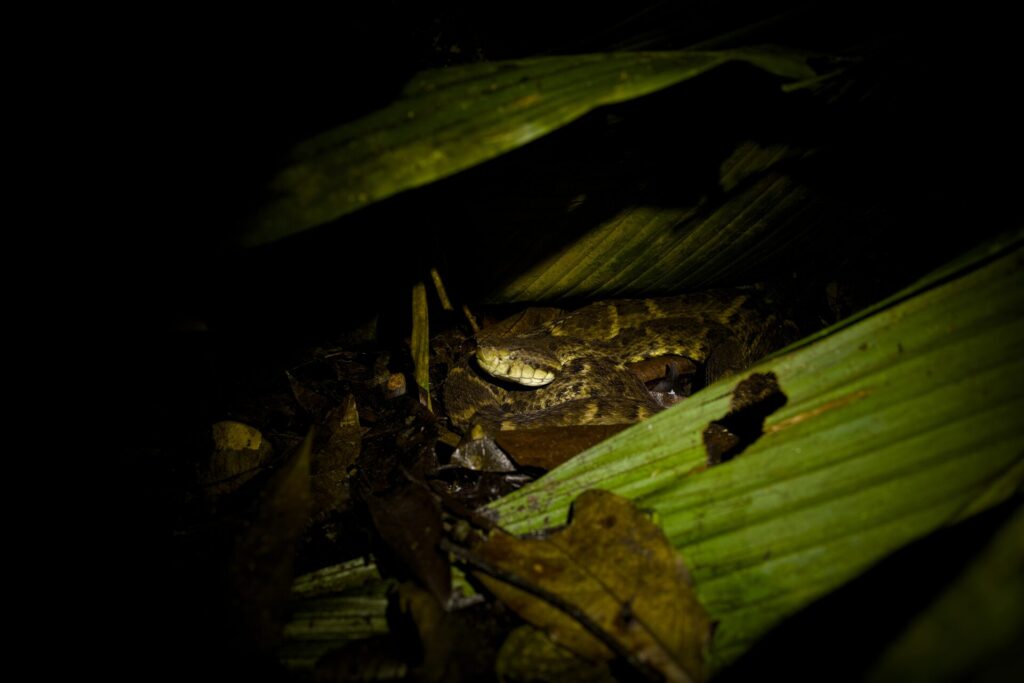
Comparison With Other Dangerous Amazon Species
The Amazon is home to many dangerous animals, but the Lancehead stands out:
- Anaconda: Massive and powerful but rarely involved in bite incidents
- Jaguar: Apex predator, but rarely seen by humans
- Common Lancehead: High human encounter rate, potent venom, and aggression
Feared, Yet Ecologically Important
Despite their fearsome reputation, Common Lanceheads play a vital ecological role by preying on rodents, helping to control pests around human settlements. They are an integral part of the Amazon’s complex food web.
Beautiful, Dangerous, and Worth Protecting
Their leaf-patterned camouflage may hide a deadly threat, but these snakes are also a vital piece of the natural puzzle. I sincerely hope the Amazon continues to be a home for the Common Lancehead and all its unique biodiversity.
Reference Links and Sources
- WHO Snakebite Fact Sheet: https://www.who.int/news-room/fact-sheets/detail/snakebite-envenoming
- Amazon Conservation Association: https://www.amazonconservation.org
